The people of Saitama City pooled impressive resources to open the Omiya Bonsai Art Museum in 2010. Billed as the world’s first publicly-operated bonsai art museum, the museum is home to outstanding trees, pots, stands, and historical documents relating to bonsai. Their brochure claims that three principles form the pillars of the museum’s activities:
1) The bonsai research center – The Museum carries out research on the history and significance of bonsai from diverse perspectives. The results are disseminated in an easy to understand way through exhibitions, lectures, classes, and so on.
2) A new tourist attraction for Saitama City – The Museum aims to become a new tourist attraction for Saitama City, one where people can easily encounter the beauty of bonsai.
3) An aid to the revitalization of the bonsai industry – By providing many people with opportunities to become familiar with bonsai, the Museum works to revitalize this traditional industry.
The museum didn’t skimp on trees. A rotating collection of bonsai gives life to exhibits and to the garden at the museum’s center. Here are some of the trees on display the rainy day we visited.
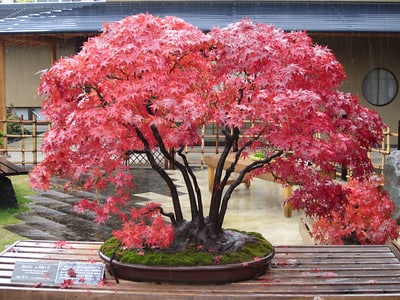
Japanese maple – the tree is named Musashi-ga-oka
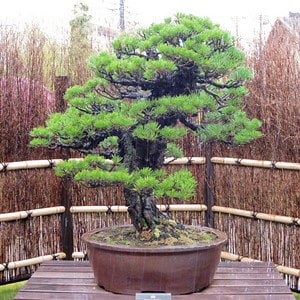
Large Japanese black pine in huge antique pot
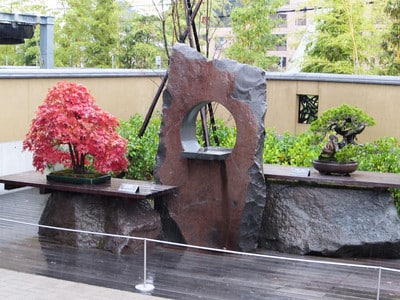
Modern bonsai display
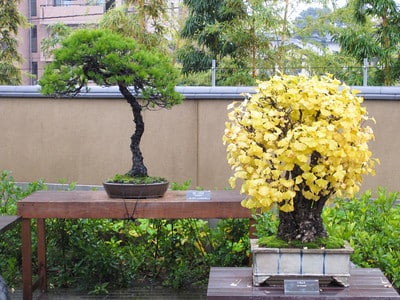
Red pine and ginkgo
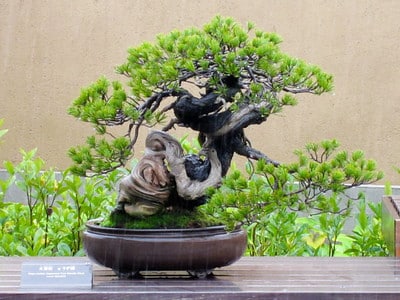
Amazing white pine
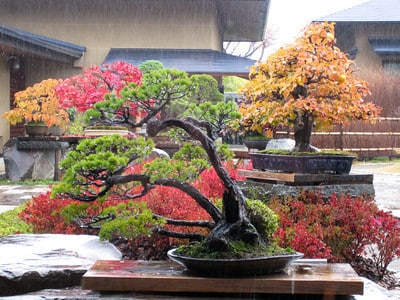
Mélange of bonsai colors
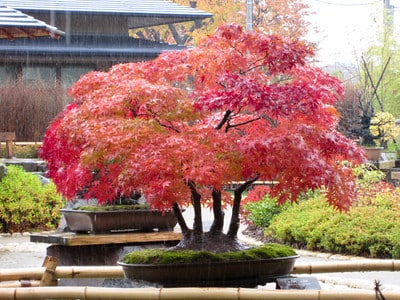
Japanese maple
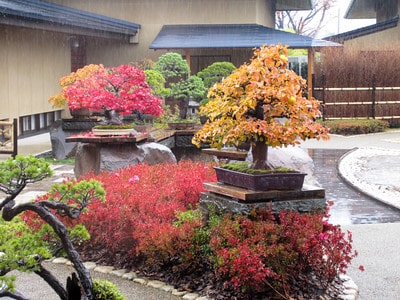
Bonsai garden
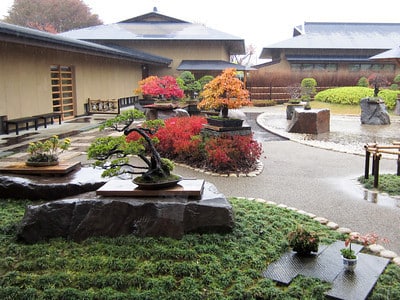
Bonsai garden
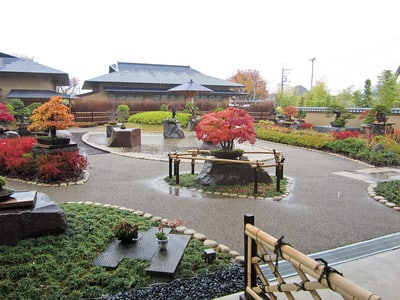
The rest of the garden
On our way to the museum, we stopped to pick up Yu-senpai. Yu-senpai’s nursery is about 15 minutes away from the museum and contains a great mix of varieties. His father is a fan of Japanese maples.
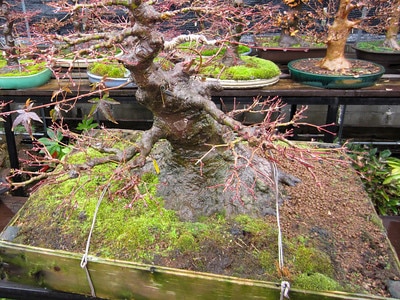
Japanese maple in development
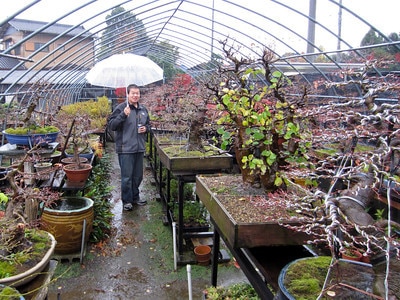
Peter enjoying the deciduous trees
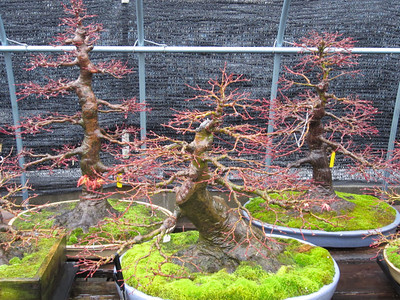
Japanese maples
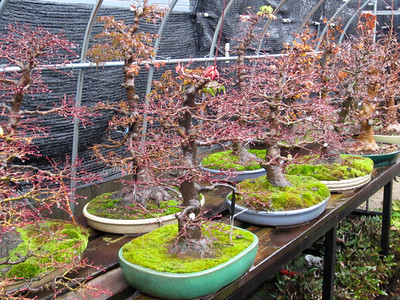
More Japanese maples
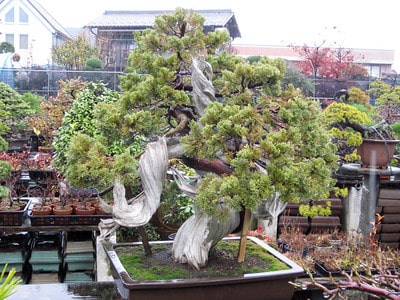
A twisty shimpaku
We also stopped by a bonsai supply nursery. Inside we looked at crowded rooms of tools, trinkets, antiques, pottery, stands and furniture. Outside sat pallets of bonsai soil and shelf after shelf of bonsai pots. Fun shopping!
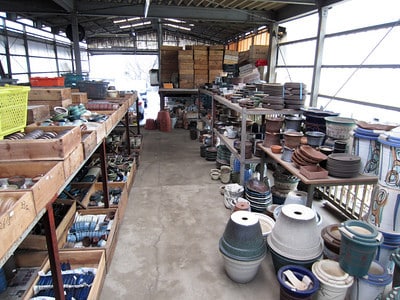
Some of the smaller pots
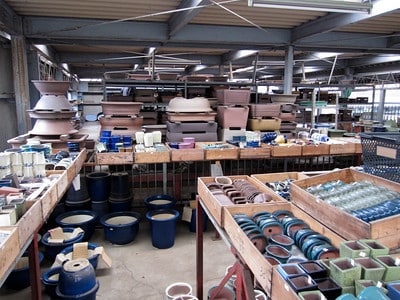
More pots
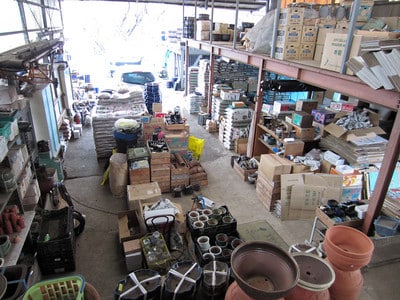
All kinds of bonsai related supplies
I picked up a few knick-knacks – an old woodworking tool, bamboo stands for accent plants – and spent the rest of the time perusing pots. Most were new Japanese or new Chinese. Despite the great selection, I demurred and saved my Yen for older pots.
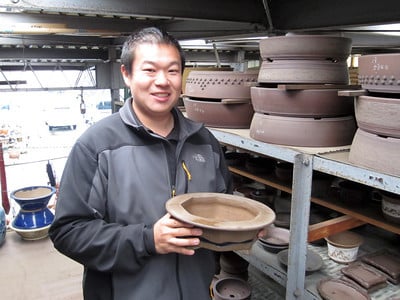
Not a hat – the pot that made Peter smile
Subscribe to Bonsai Tonight
New Posts Delivered Every Tuesday and Friday
Don Quixote says
Hey Jonas, just wanted to say thanks for your blog. I especially have been enjoying the more recent post from Japan. Thanks again.
Jeremiah Lee says
Fantastic Post! Geez the level in Japan is just so far ahead of us, it gives me both a depressing and an inspirational feeling. Peter looks thin.
Barry McD. says
Nice post, Jonas. It is also nice to see what passes for modernist displays, Japanese style, in the musuem garden. It looks like your experience there has been eyeopening. How much longer will you be staying?
xwires says
Thanks all! Jeremiah – inspirational, yes. Rather than thinking of Japan as ahead of us, I think about how much longer bonsai has been practiced there. We’re on a good track, but we’ve a ways to go.
Barry – I’ve actually just returned to California, though I’ll likely be posting pics from the trip for weeks to come.
Jose Luis says
Hola amigo Jonas,vaya pedazo de arbolazos que colorido, una verdadera maravilla,se le tiene que poner a uno los dientes largos visitar los viveros de ventas y no poderse traer uno en el avión, a mí me gustan de tamaño entre 60cm a 80cm.
Un saludo desde Madrid.
Jose luis.
Jose Luis says
Hi Jonas, I don’t know if you have understood my last message because it was in spanish. I would like to make some questions:
– I’ve seen people use a little bags in the land that I suppose it is fertilizer. It is sold in this bags or people put it in the bag to avoid being eating by birds? what is the material of this bags?
– what kind of wire is allowed in the great competitions like Kokufu-Ten o Taikan-Ten?
I take advantage to wish you a merry christmas,
This note has been written by my wife that know a little english.
Thanks in advance
Regards,
Jose Luis
xwires says
Hi Jose Luis – thanks for the translation. The little bags are tea bags. These are manually filled with fertilizer and held in place with bamboo toothpicks. It’s a labor intensive process, but it’s clean and neat and prevents the fertilizer from washing away.
Your question about wire on show trees is a good one. I don’t know about any hard and fast rules, but in general, the less wire, the better. We typically don’t see large wires on trees in the best shows. Some conifers may have some wire on them, typically copper wire that’s turned black. Deciduous trees shown without leaves typically don’t have any wire on the branches. More and more these days, great trees are shown with little or no wire.
Gracias a usted – y su esposa – por el mensaje, y Feliz Navidad a ustedes!
Jonas